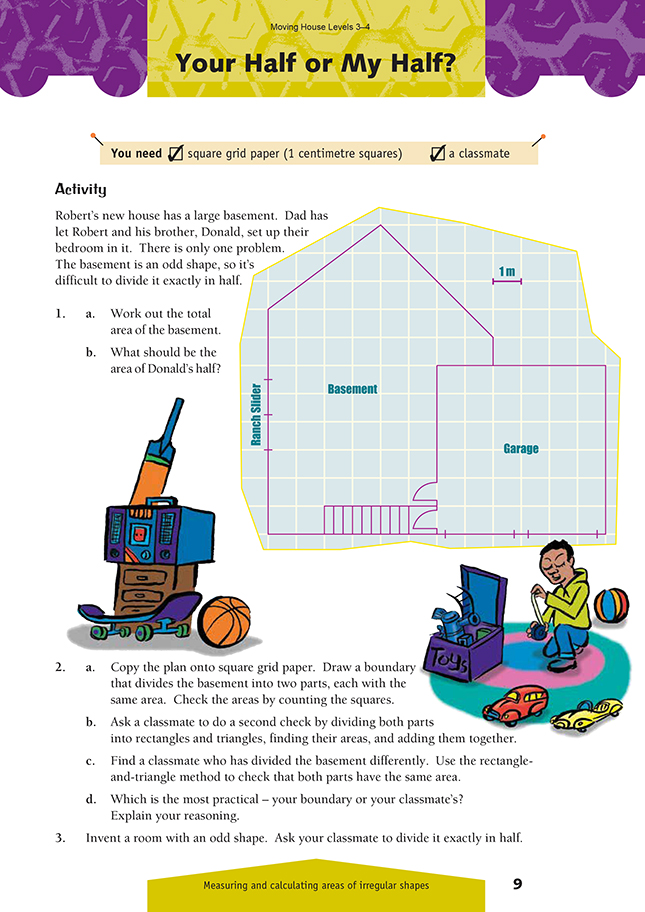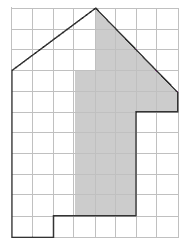This is a level 3 measurement activity from the Figure It Out theme series.
A PDF of the student activity is available.
Click on the image to enlarge it. Click again to close. Download PDF (345 KB)
count squares and use multiplication to calculate area of rectangles and triangles
FIO, Levels 3-4, Theme: Moving House, Your Half or My Half, page 9
Square grid paper (1 centimetre squares)
A classmate
The basement is a composite shape, so it can’t be found using a simple formula. Discuss the possible ways of determining this area:
• counting all the squares (what do you do about part squares?)
• dividing the basement into rectangles, squares, and triangles and then working out the various areas using formulae (for example, area of rectangle = base × height).
Having found its area, the students need to divide the floor into two equal parts. Ask them to think about factors they might consider before drawing up their boundary, for example, the location of the doors. Note that the question does not imply that a physical wall is to be constructed along this line, only that the space is to be shared equally. The students may have interesting ideas about how the two areas could be delineated. Once they have completed the basic task, you may like to ask them to produce a boundary line that has at least one diagonal section.
In question 3, it is probably best to restrict the students to straight-line boundaries. Suggest that to calculate the area of each “half”, they should split the large shape into suitable squares, rectangles, and triangles (as they did for question 2) and add the areas of these rather than just count the squares of the grid. Although this approach may demand more effort, it will reinforce higher order skills.
When they have completed the set parts of this activity, the students could draw their own scale diagram of the basement using a larger scale, with the room divided into two parts according to their preferred plan. They could then cut out scale rectangles to represent beds, desks, sets of drawers, and other space-consuming items and see how these could best be fitted into the available shape. Is the area large enough for three equal-sized bedroom spaces? How could the area be divided into thirds?
An interesting activity to help the students find half of a shape (which also introduces the idea of symmetry) is to find all the possible ways of dividing a 5 by 5 geoboard into two symmetrical halves. If geoboards are not available, dot paper in a 5 by 5 array can be used instead:
Answers to Activity
1. a. 58 m2
b. 29 m2
2. a. There are numerous possible solutions.
One is:
b.–c. Individual activity
d. The boundary with the fewest changes of direction and fewest “dead” corners is likely to be the best solution.
3. Answers will vary.


